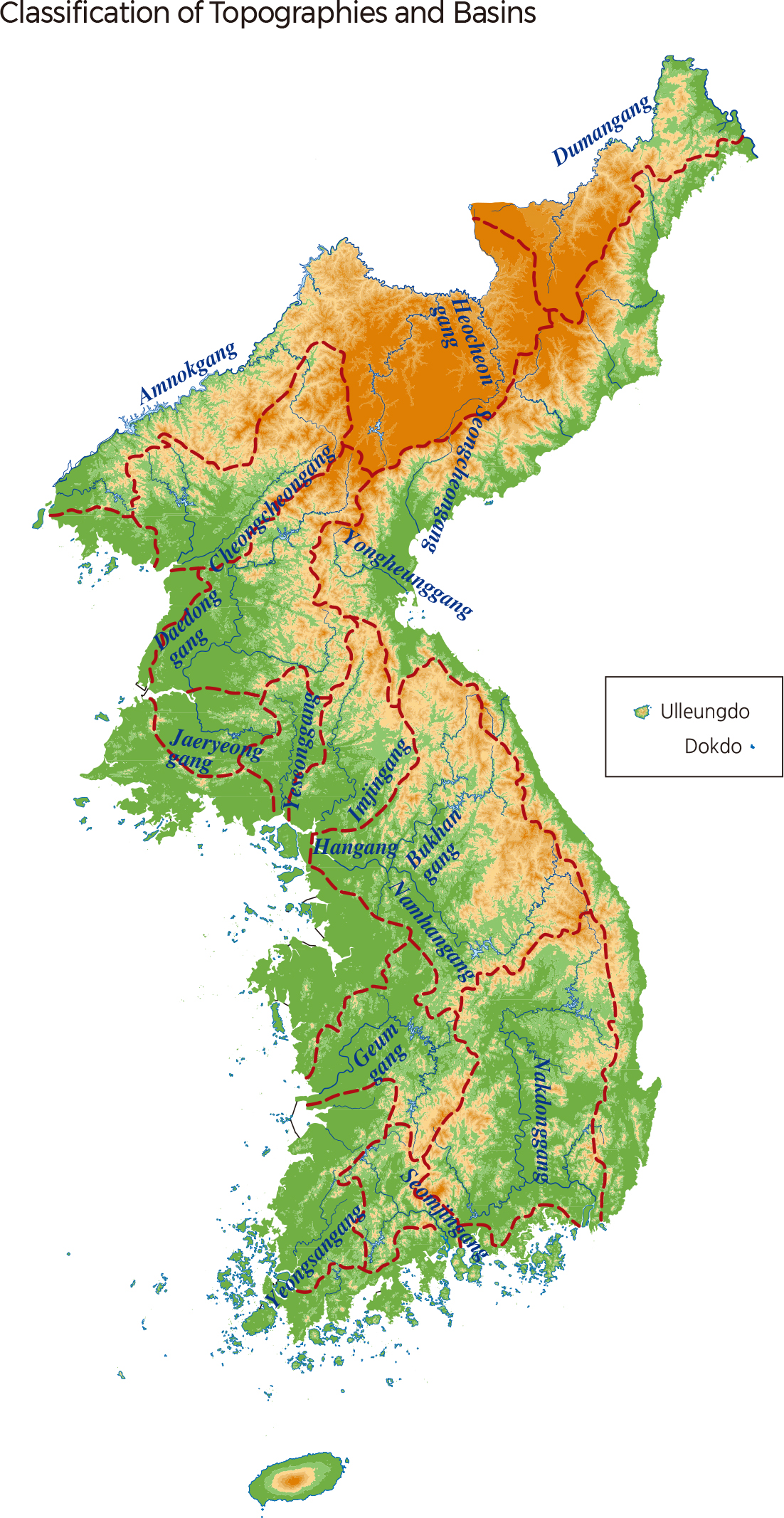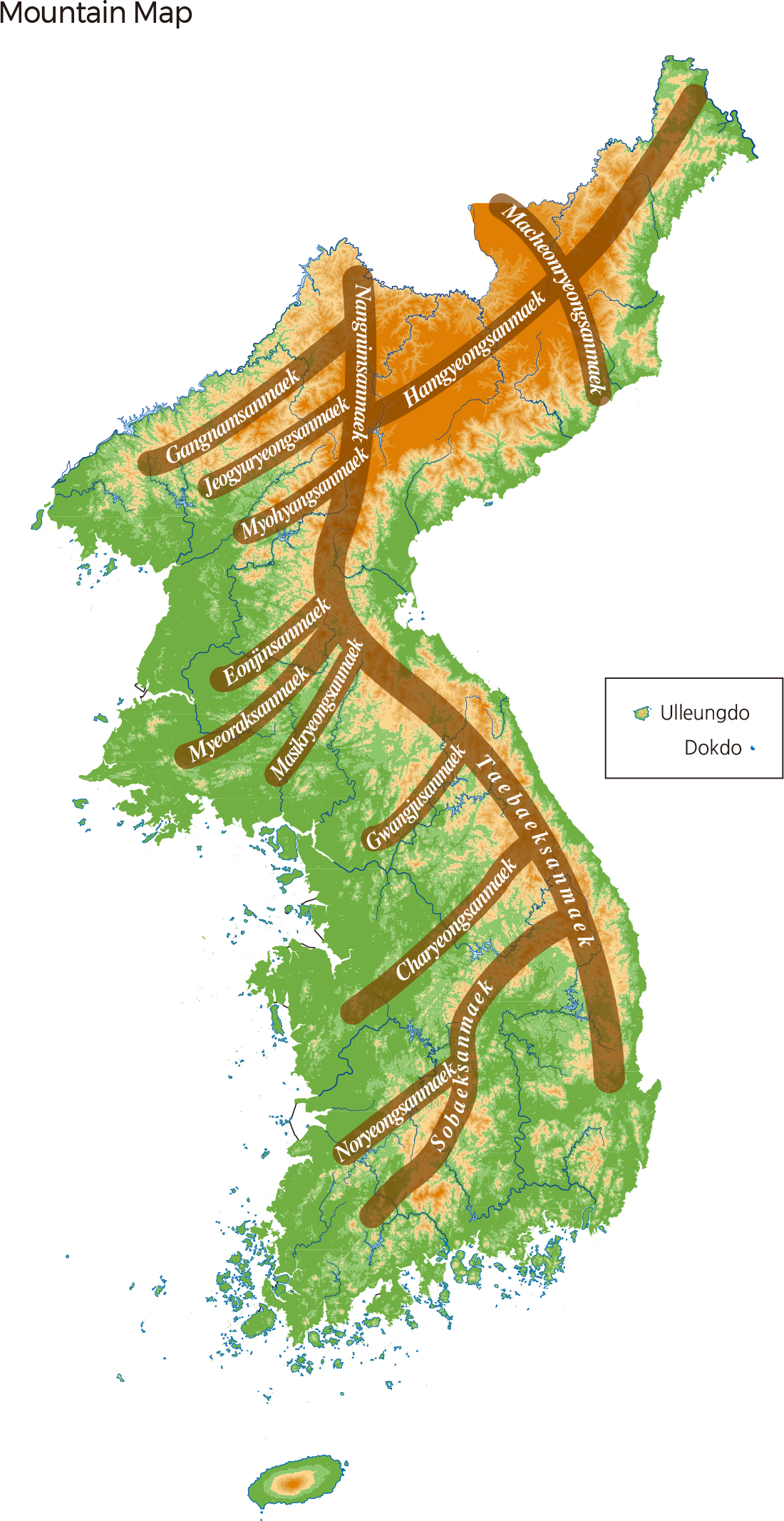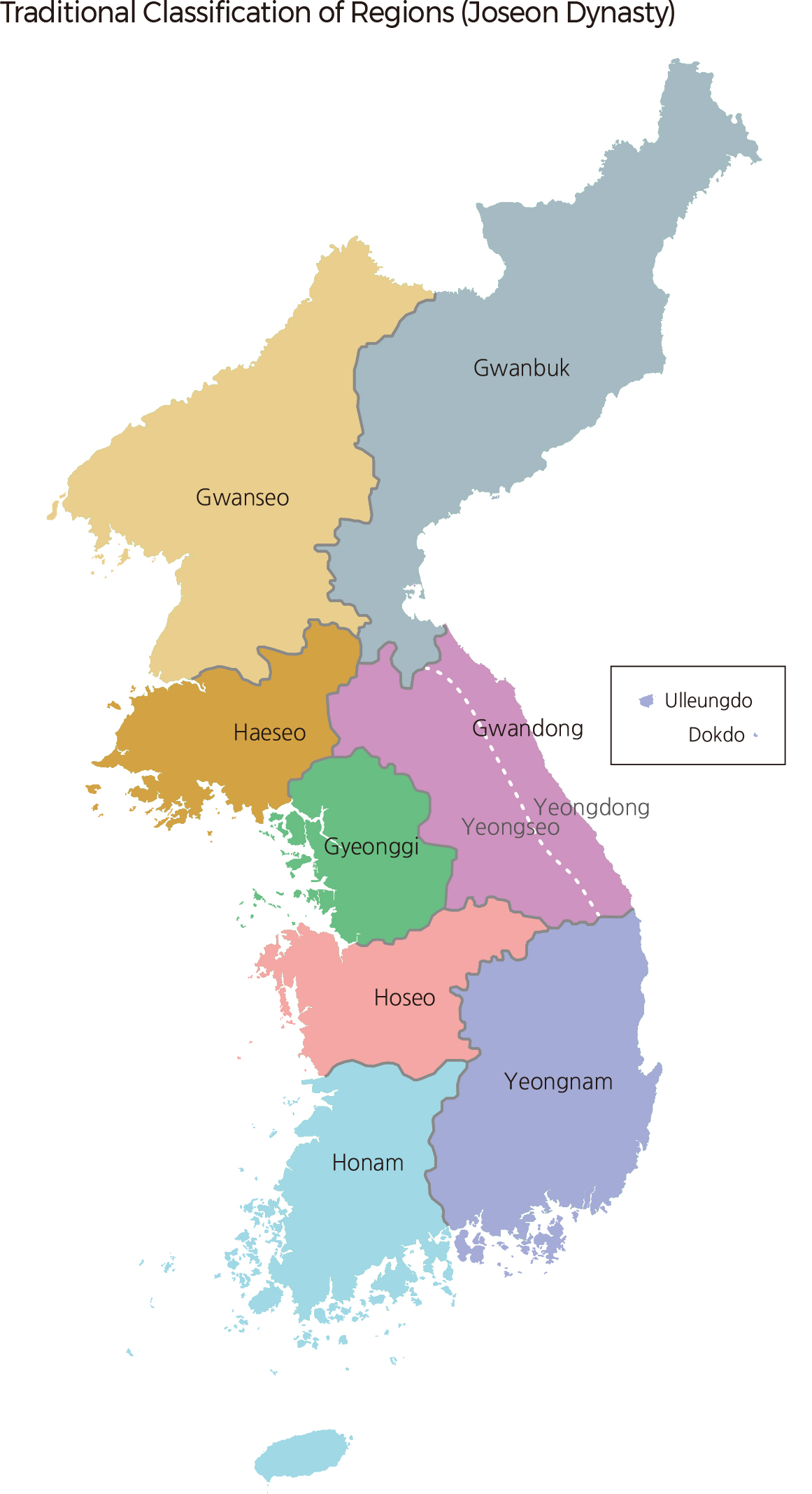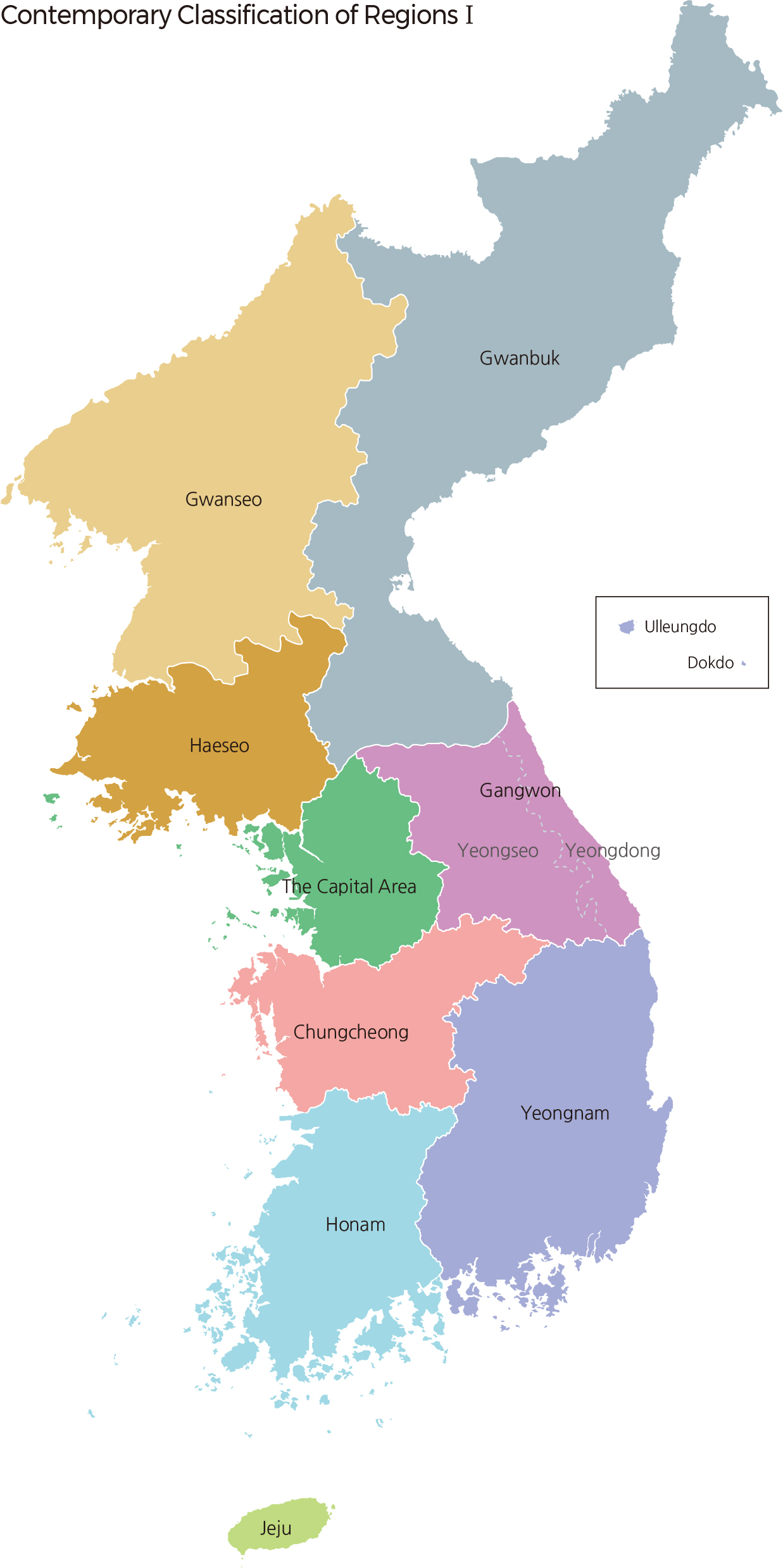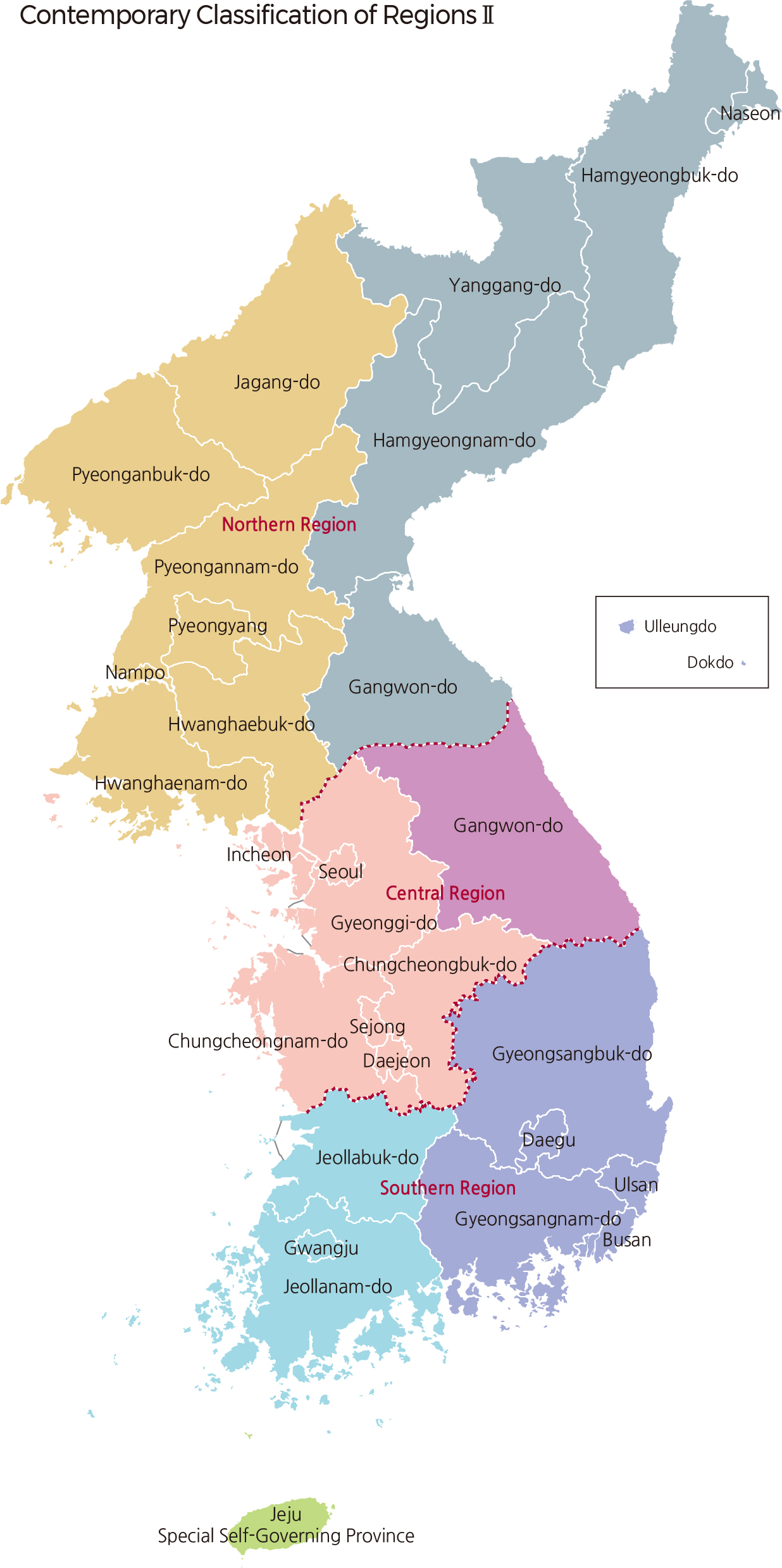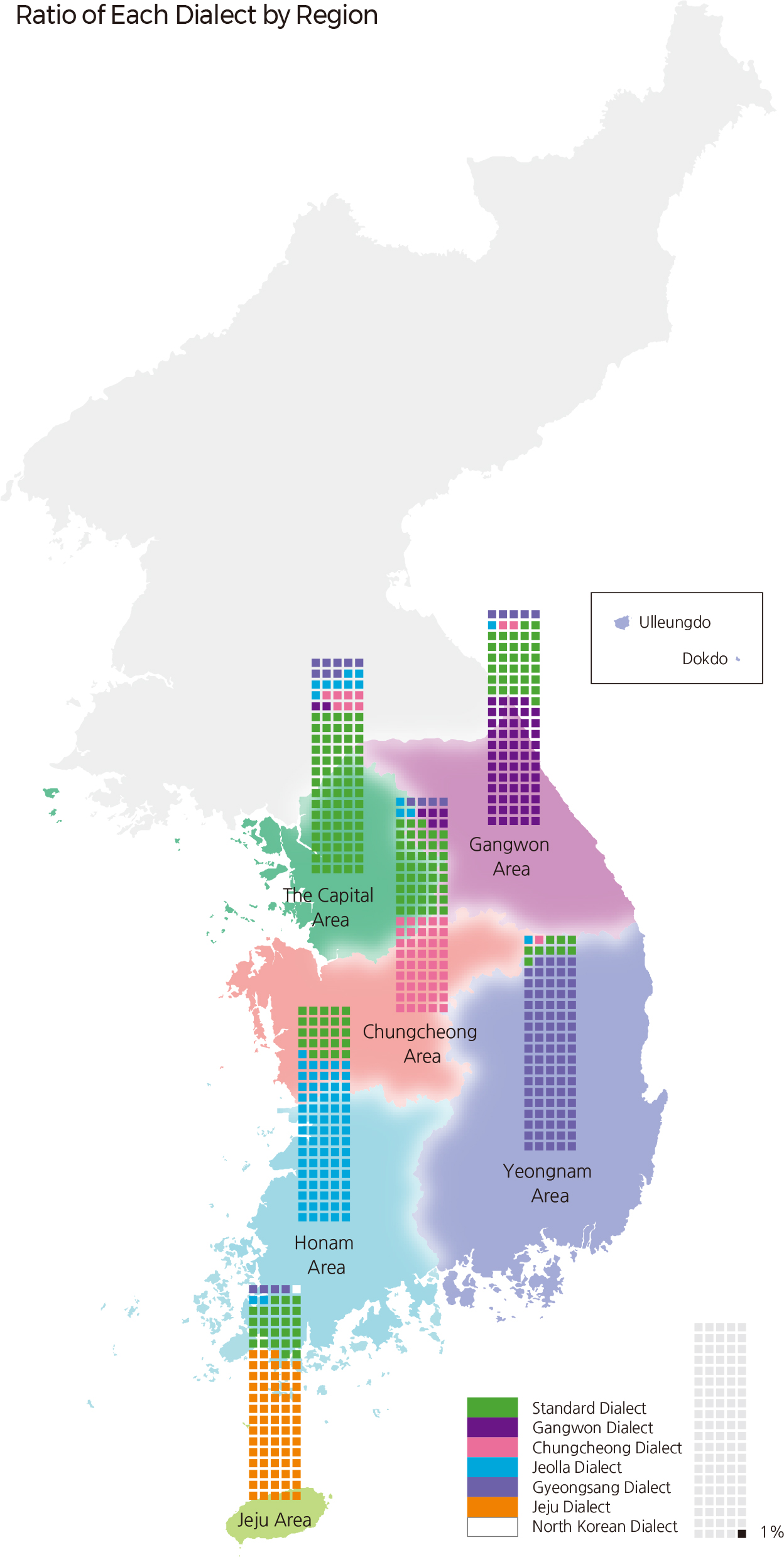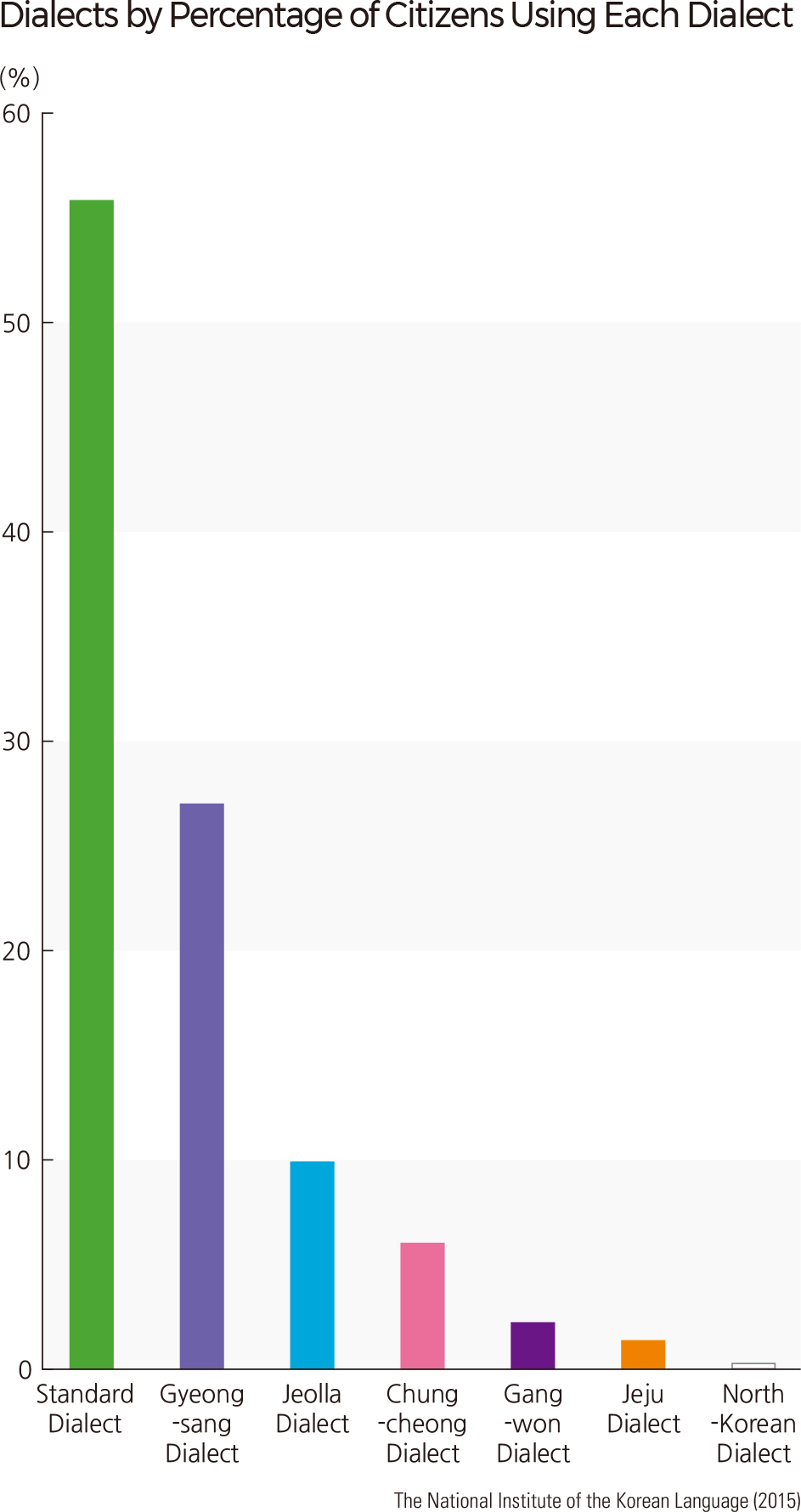English I 2019
Korea has used administrative regions and geographical features to define its sub-regions. Administrative classification designates regions according to administrative districts, while geographical classification designates regions according to similarities and function. In Korea, a combination of administrative and geographical classifications has been applied. For example, the distribution of mountains and rivers enabled classification based on geographical features and natural physical boundaries. Administrative districts established during the Goryeo Dynasty form the basis for contemporary administrative districts.
Korea has been divided into the northern, central, and southern regions primarily on the basis of natural physical features like mountain ranges and rivers. The northern region, which referred to the northern part of Myeoraksanmaek Mountain Range in accordance with the traditional classification of the region, now refers to North Korea. The central region extends from the area below the demarcation line to where Sobaeksan Mountain meets the lower stream of Geumgang River, which is currently the capital area, Gyeonggi-do, Chungcheong-do, and Gangwon-do. The southern region begins below where Sobaeksan Mountain and the lower streams of Geumgang River meet, and currently includes Jeolla-do, Gyeongsang-do, and Jeju-do.
As administrative districts, the provinces are considered to be significant in Korea’s regional classification. The contemporary regional classification of Korea is similar to the traditional regional classification that descended from the Goryeo and Joseon Dynasties. The Gwanseo, Gwandong, and Gwanbuk regions are based on the Joseon Dynasty’s administrative district with Pyeongan-do, Hamgyeong-do, and Gangwon-do as the center of each, respectively. The Gwandong region is subdivided along the Taebaeksanmaek Mountain Range into two regions, with the eastern part renamed Yeongdong, and the western part renamed Yeongseo. Haeseo has Hwanghae-do at its center. The Gyeonggi region refers to Gyeonggi-do, including Hanyang (currently Seoul). Hoseo is a region centered around Chungcheong-do, which corresponds to the Joseon Dynasty’s administrative districts, while Honam is a region centered around Jeolla-do and includes Jeju Island. Yeongnam, with Gyeongsang-do as the center, literally means the southern part of Joryeong Pass of the Sobaeksanmaek Mountain Range.
In terms of administrative regions, North Korea is composed of the following nine provinces: Hwang-haenam-do, Hwanghaebuk-do, Hamgyeongnam-do, Hamgyeongbuk-do, Pyeongannam-do, Pyeonganbuk-do, Gangwon-do, Yanggang-do, and Jagang-do. South Korea is also composed of nine provinces: Gyeongsangnam-do, Gyeongsangbuk-do, Jeollanam-do, Jeollabuk-do, Jeju Special Self-Governing Province, Gangwon-do, Chungcheongnam-do, Chungcheongbuk-do, and Gyeonggi-do.
Regional differences have narrowed thanks to the development of efficient transportation. Under these circumstances, the distribution of various dialects that are still used by local residents today is an important indicator reflecting the historical classification of regions. As for South Korea, the classification of regions by language is known to involve six major dialects based on direction: northwest, northeast, central, southwest, southeast, and Jeju dialects. Classifying regions clearly with the dialects is not easy; however, a province is generally considered to be a unit that shares the same dialect. The central dialect is mainly found in the capital area, Chungcheong-do, the Gangwon Yeongseo region, and Hwanghae-do. The southwest dialect is found in Jeollanam-do and Jeollabuk-do. The southeast dialect is found in Gyeongsangnam-do, Gyeongsangbuk-do, and the Yeongdong area in Gangwon-do. The northwest dialect is found in South and North Pyeongan-do. The northeast dialect is found in Hamgyeongnam-do and Hamgyeongbuk-do, and the Jeju dialect is found on Jeju-do.
With respect to South Korea, the classification of regions based on dialects largely involves six dialects, namely the standard, Gangwon, Chungcheong, Jeolla, Gyeongsang, and Jeju dialects. This classification was used in a 2015 survey performed by the National Institute of the Korean Language that set out to measure Koreans’ consciousness of language use. The nationwide survey showed that 54.5% claimed to use the standard dialect, 26.4% used the Gyeongsang dialect, 9.7% used the Jeolla dialect, 5.8% used the Chungcheong dialect, 2.2% used the Gangwon dialect, 1.3% used the Jeju dialect, and 0.1% used the North Korean dialect. The ratio of those who use local dialects is affected by population movements and urban development. In general terms, the ratio of those who replied that they use the local dialect in the Honam region and the Yeongnam region was higher than in other regions. |
